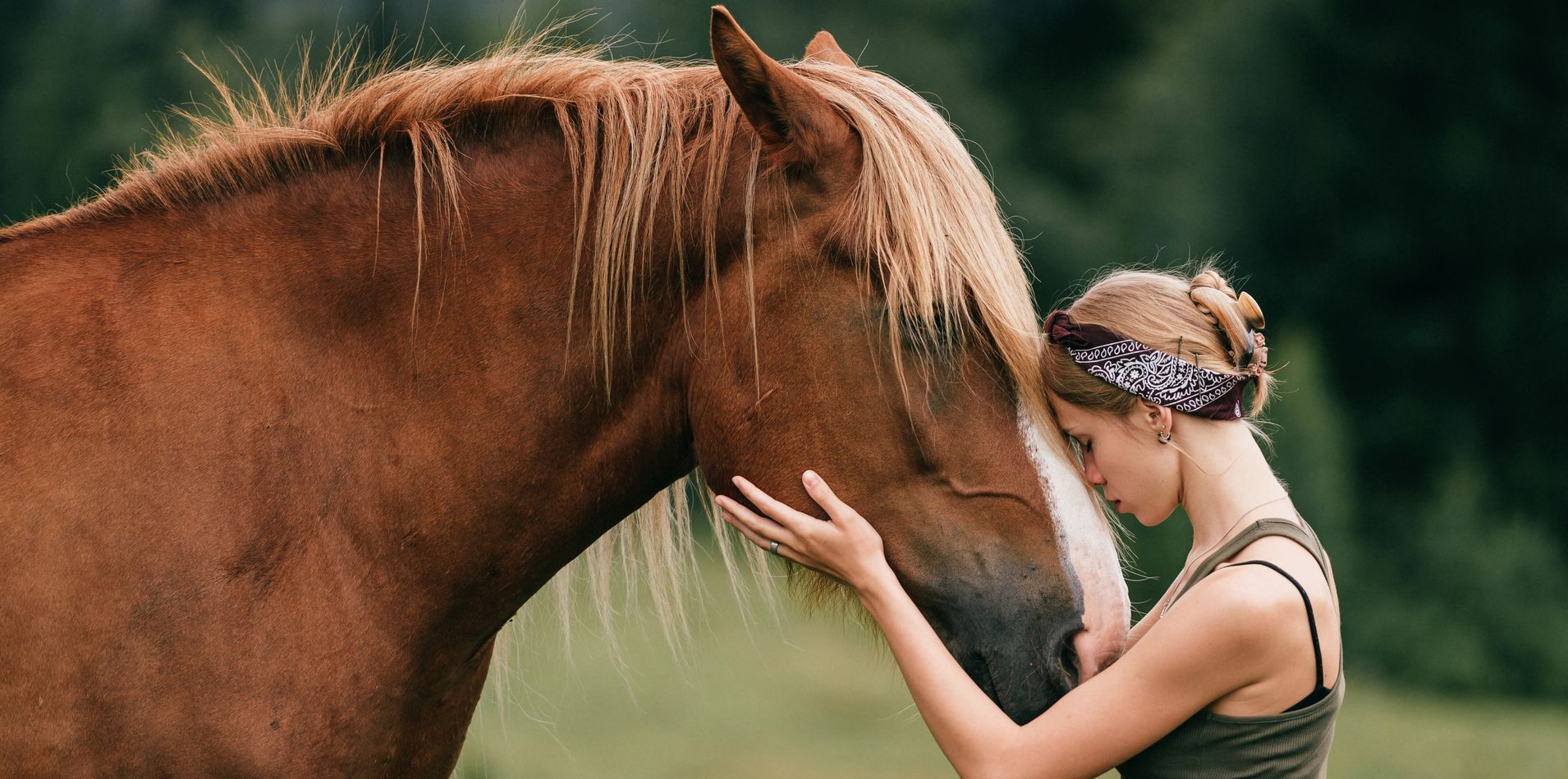Euthanasia
euthanasia (n.)
1640s, from Greek eu- "good" (see eu-) + thanatos "death". Literally “a good death”.

RECOMMENDATIONS:
BE PREPARED - PRE-EUTHANASIA CONSIDERATIONS
- Unless there is a police officer or other authority present, the veterinarian will be in charge of the situation. It is imperative that you secure the safety of all personnel, animals and property present.
- Whenever possible the decision to euthanase the horse should only be made after sufficient information (e.g. X-rays, photos, videos etc.) has been gathered and documented to support your decision.
- Whenever possible the decision to euthanase should be made in consultation with the horse’s owner or representative and any insurance company.
- Whenever possible written, informed consent should be obtained prior to euthanasia from the horse’s owner or representative. In an emergency, this could be a text message.
- If this involves delaying the euthanasia, the horse should be made as comfortable as possible in the interim by the administration of a sedative (e.g. Sedator) in combination with an opioid (e.g. Butorpahnol) and a large-dose of a non-steroidal anti-inflammatory (e.g. Platinum Bute IV).
- If possible, any fractures should be stabilised with the use of a splint or heavy bandage as this will reduce the horse’s pain and panic response.
- If possible, the horse should be removed from public scrutiny or screened off from public view. If screens are not available, vehicles can sometimes be used to obscure the scene from the public.
- Know details, including contacts, for appropriate disposal of the body (incl. memorial cremation) in your area.
- Discuss the plan for the safe disposal of the body with the owner with consideration to environmental contamination of waterways and consumption of the carcass by wildlife or domestic carnivores.
- Above all, REMAIN CALM and COMPASSIONATE.
Always keep a dedicated, pre-prepared euthanasia kit in your car for rapid and ready access.
The kit should contain the following:
- ½ -1 x bottle of Lethaton (make sure bottle remains within its expiry date)
- 1 x bottle of alpha-2 agonist (eg Sedator or Xylazine)
- 4 x Syringes (1mL/3mL/5ml) and needles (21G/18G) for administration of sedative
- 6 x 50-60mL Syringes
- Large bore needle for rapid drawing up Lethaton (preferably 14G, 1.5”)
- Large bore catheter (at least 14G) and either 3. 5” or 5.25” as less likely to come out of the vein during administration especially if the horse plays up
- Bung for catheter (optional)
- Catheter extension set (optional)
- Stethoscope
- Disposable gloves
- Euthanasia consent form

PREPARATION
- If possible, obtain written informed consent. A text message may suffice in an emergency.
- If possible, select an area that will give ready access for the removal of the horse’s body. Remember that the horse will likely be in rigor mortis which makes removal via normal doorways, etc difficult.
- If possible, the euthanasia should be done in a confined but open area, such as a small yard and away from general viewing.
- Make sure that the area where the body will be housed until disposal can be secured, cordoned off or screened to prevent unwanted access or viewing by the public.
- Avoid people taking photographs, videos and social media.
- If there is likely to be a delay in removal of the body, arrangements should be made to cover the body with a tarpaulin or horse rugs, etc.
- Clear the area as much as possible of people and obstacles.
- Select the best handler to be on the horse’s head and instruct them to keep firm control on the horse’s head and try and get the horse to gently sink back on its haunches in a straight line and try and guide the horse’s head so that the horse lands catheter side up.
- The handler should be warned that the horse’s behaviour after it loses consciousness may be unpredictable and it is the handler’s responsibility to guide the horse to the ground by applying pressure to the halter whilst staying safe.
- Make sure the head collar or halter is tightly fitted so it won’t come off if the horse rears or falls over backwards.
- Warn the owner and any spectators that the horse may show paddling behaviour, vigorous muscle contractions/rigors and agonal breathing for a period of a few minutes after losing consciousness. Reassure them that these are part of the body’s process of shutting down and that the horse is heavily anaesthetised/unconsciousness and not feeling anything.
- If possible, select an assistant to hand your supplies to you sequentially and rehearse the order with them. Otherwise find somewhere close and convenient to place the items. Lay them out in order of administration.
- If the horse is highly excited, distressed, in a lot of pain, inadequately sedated or has poor blood pressure/cardiac output, etc the euthanasia is likely to not go as smoothly. Attempts should be made to make sure these situations are avoided wherever possible.
- If the above conditions cannot be achieved, consider also adding the neuromuscular blocking agent succinylcholine (suxamethonium) chloride at a dose rate of 0.088mg/kg to the pentobarbitone syringe. This will cause the horse to drop rapidly but the horse will still retain full consciousness until the pentobarbitone takes effect.

EUTHANASIA PROTOCOL
- Wear gloves.
- If possible, place a subcutaneous local anaesthetic (eg Medicaine) skin bleb at the catheter entry site.
- Place the 10-14G, 3.5-5.2” catheter.
- Attach extension set to the catheter if desired.
- Sedate the horse using intravenous detomidine (eg Sedator 0.01 – 0.02 mg/kg) or Xylazine (eg 0.5-1.0 mg/mL). Depending on the circumstances, an opioid may also be given (eg Butorphanol 0.05-0.1mg/kg). The horse should not be overly sedated as any decrease in heart rate and blood pressure may delay the subsequent distribution of the barbiturate.
- Draw up 4 x 50mL Lethaton Euthanasia Solution whilst the sedation is taking effect. If speed is important, it will be quicker to pour the Lethaton into the syringes by removing the plungers and holding a gloved finger against the syringe nozzle.
- Include suxamethonium if desired in the first syringe.
- Wait for the horse to show signs of adequate sedation.
- Rapidly administer 2 x 50mL Lethaton via the catheter.
- Stand back and wait for horse to hit the ground and then quickly assess whether the horse requires any further Lethaton.
- Make sure all personal remain away from the horse’s legs as the horse is likely to have some sudden agonal movements or paddle post barbiturate injection.
- Once the horse is on the ground, check the horse’s eye for the presence of a dilated pupil and the absence of a pupillary light and corneal reflex.
- Check for the absence of a pulse (eg facial artery and apex heartbeat).
- Use your stethoscope to check for the absence of the horse’s heartbeat.
- Record the horse’s identification features such as brands, microchip number, markings. Use photos if appropriate.
- Take any photographic evidence you require of the horse’s injuries, etc.
- If appropriate, consider collecting a “keep sake” such as a piece of the horse’s forelock/mane, tail or shoe for the owner.
- Ensure that any used syringes, empty Lethaton bottles are disposed of in an environmentally friendly and safe manner.


